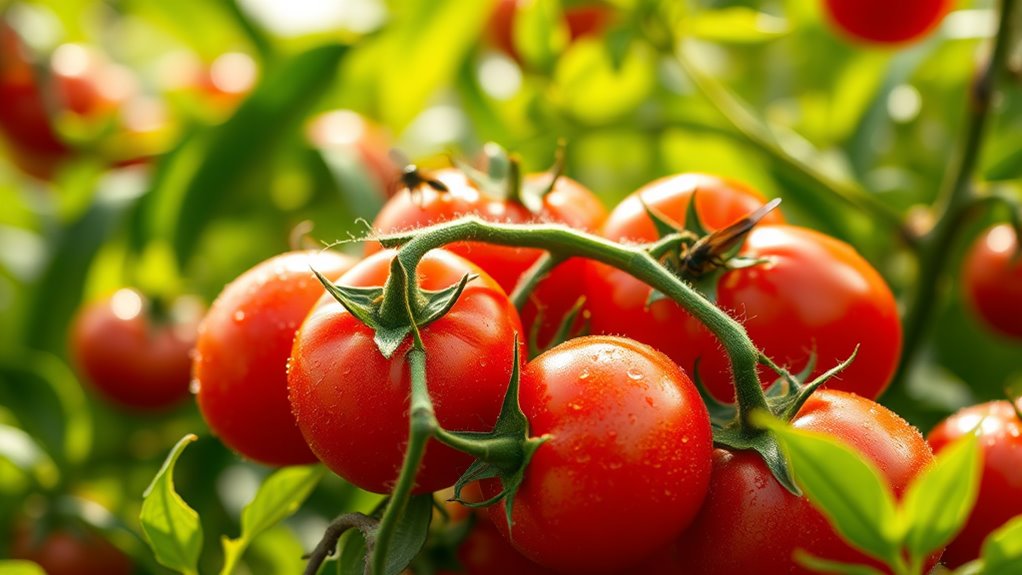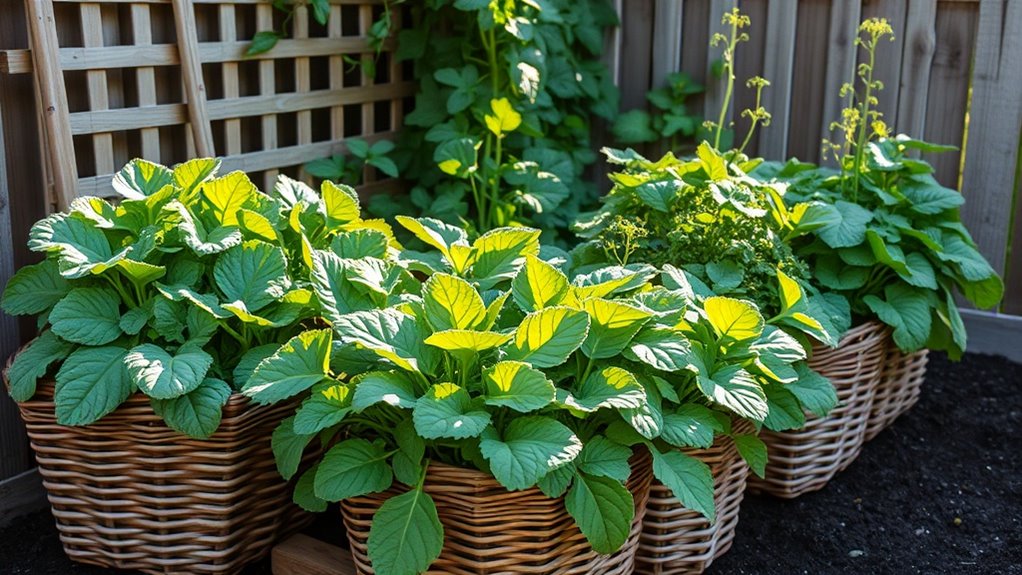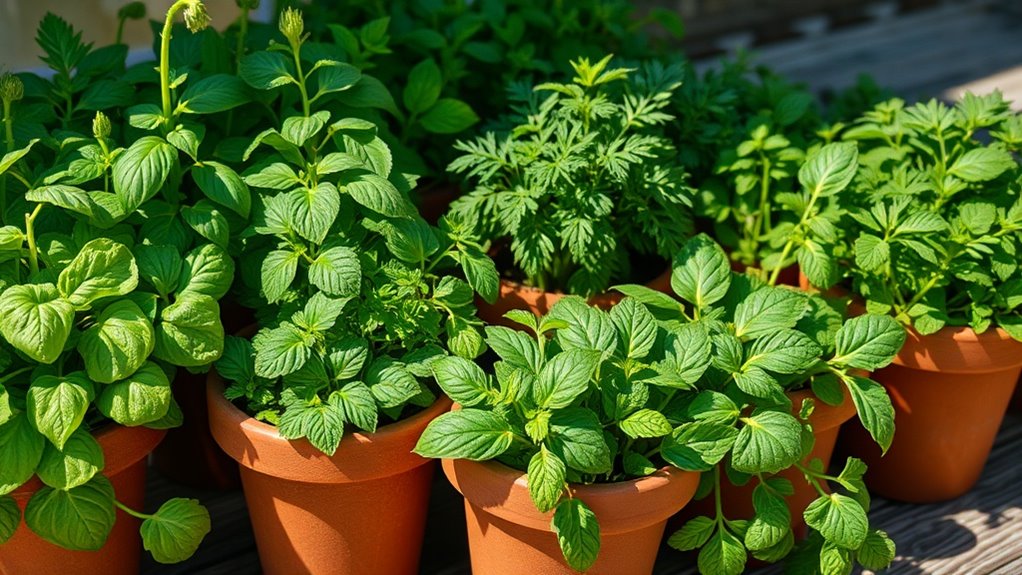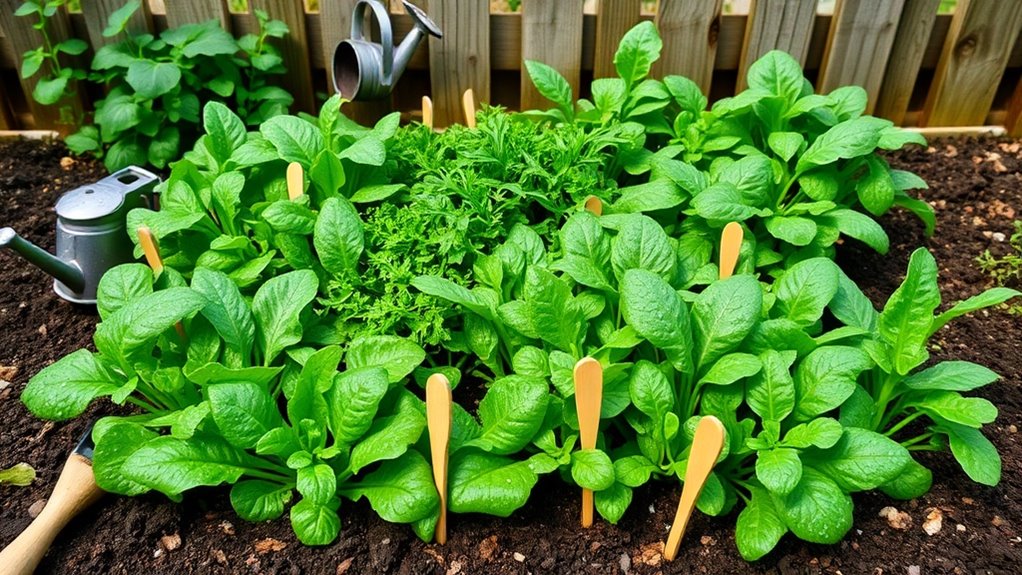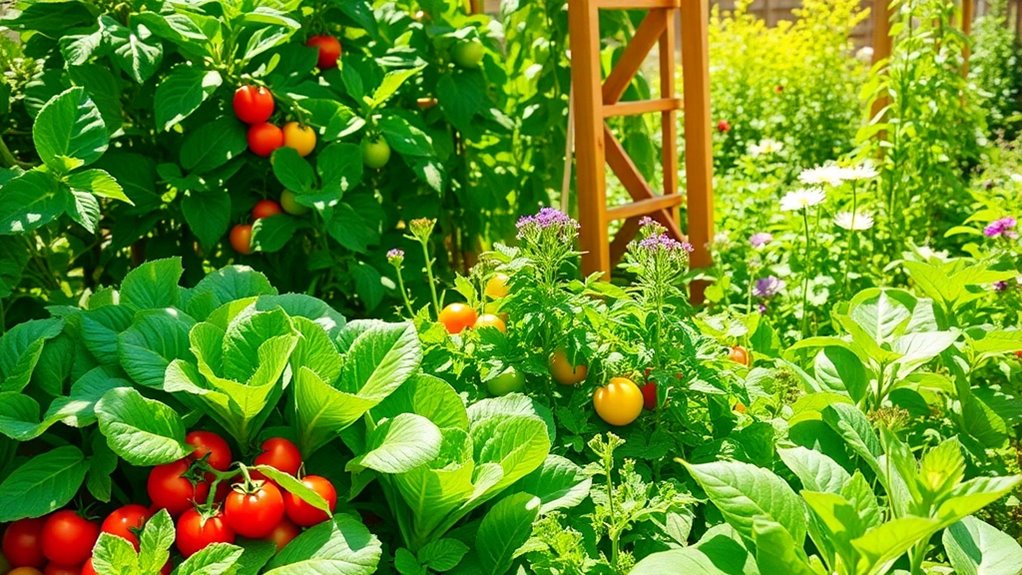The Beginner’s Guide to Tomatoes That Won’t Die on You
Imagine stepping into your garden, vibrant tomato plants brimming with promise and ripe fruit just waiting to be picked. But achieving this ideal harvest requires more than just luck; it begins with choosing the right variety and preparing your soil effectively. Are you ready to explore the vital steps that will keep your tomatoes thriving and protect them from common pitfalls? Let’s get started on ensuring your tomato plants not only survive but flourish.
Choosing the Right Tomato Variety
When it comes to choosing the right tomato variety, how do you know which one will thrive in your garden?
For beginner tomato growing, consider factors like climate, space, and your taste preferences.
Determinate varieties grow compactly and are great for small spaces, while indeterminate types produce continuously.
Look for disease-resistant options to boost your success and enjoyment throughout the season.
Essential Soil Preparation Techniques
While preparing your soil might seem like a daunting task, it’s essential for growing healthy tomatoes.
Start by testing your soil’s pH; tomatoes thrive in slightly acidic conditions (6.0-6.8).
Next, incorporate organic matter like compost to improve drainage and nutrient content.
Additionally, be aware of the signs of acidic soil, such as poor plant growth and yellowing leaves, which can indicate that adjustments are needed.
Don’t forget to remove weeds and rocks, ensuring your tomatoes have a clean, nutrient-rich environment to flourish.
Happy gardening!
Optimal Planting Conditions
To achieve the best results in growing tomatoes, you’ll want to ensure optimal planting conditions that cater to their specific needs.
Focus on these three essential factors:
-
Sunlight: Choose a location with at least 6-8 hours of direct sunlight each day.
-
Temperature: Aim for soil temps between 60°F and 70°F for healthy growth.
-
Spacing: Plant seedlings 18-24 inches apart for proper airflow and nutrient access.
Additionally, be mindful of common mistakes such as overcrowding your plants, which can lead to poor air circulation and increase the risk of disease.
Watering and Fertilizing Tips
Once you’ve established optimal planting conditions for your tomatoes, the next step is mastering the art of watering and fertilizing. Water deeply once a week, ensuring soil stays moist but not soggy. Fertilize with a balanced tomato fertilizer every 4-6 weeks. Use the table below to track your watering and fertilizing schedule. Additionally, incorporating soil preparation techniques can significantly enhance the flavor profile of your tomatoes.
| Action | Frequency | Notes |
|---|---|---|
| Watering | Weekly | Deep soak |
| Fertilizing | Every 4-6 weeks | Balanced formula |
| Mulching | As needed | Retain moisture |
| Soil testing | Every season | Adjust nutrients |
Common Pests and Diseases to Watch For
Tomatoes are susceptible to several common pests and diseases that can significantly impact their health and yield.
To protect your plants, watch for the following:
-
Aphids – These tiny pests sap nutrients from your plants, leading to stunted growth.
-
Blight – This fungal disease creates dark spots on leaves and can spread rapidly.
-
Whiteflies – Similar to aphids, they weaken plants and may introduce viruses.
Additionally, overwatering plants can create an environment that encourages pest infestations and diseases.
Techniques for Supporting Healthy Growth
While growing tomatoes can be rewarding, employing effective techniques for supporting healthy growth is essential for a robust harvest.
Start by providing ample sunlight and ensuring soil drains well. Use stakes or cages to support plants, preventing breakage.
Regularly water your tomatoes, but avoid overwatering. Pruning unnecessary leaves can also promote airflow and reduce disease risk, helping your plants thrive. Additionally, consider the seasonal garden tips that can enhance the overall growth and health of your tomato plants throughout the year.

